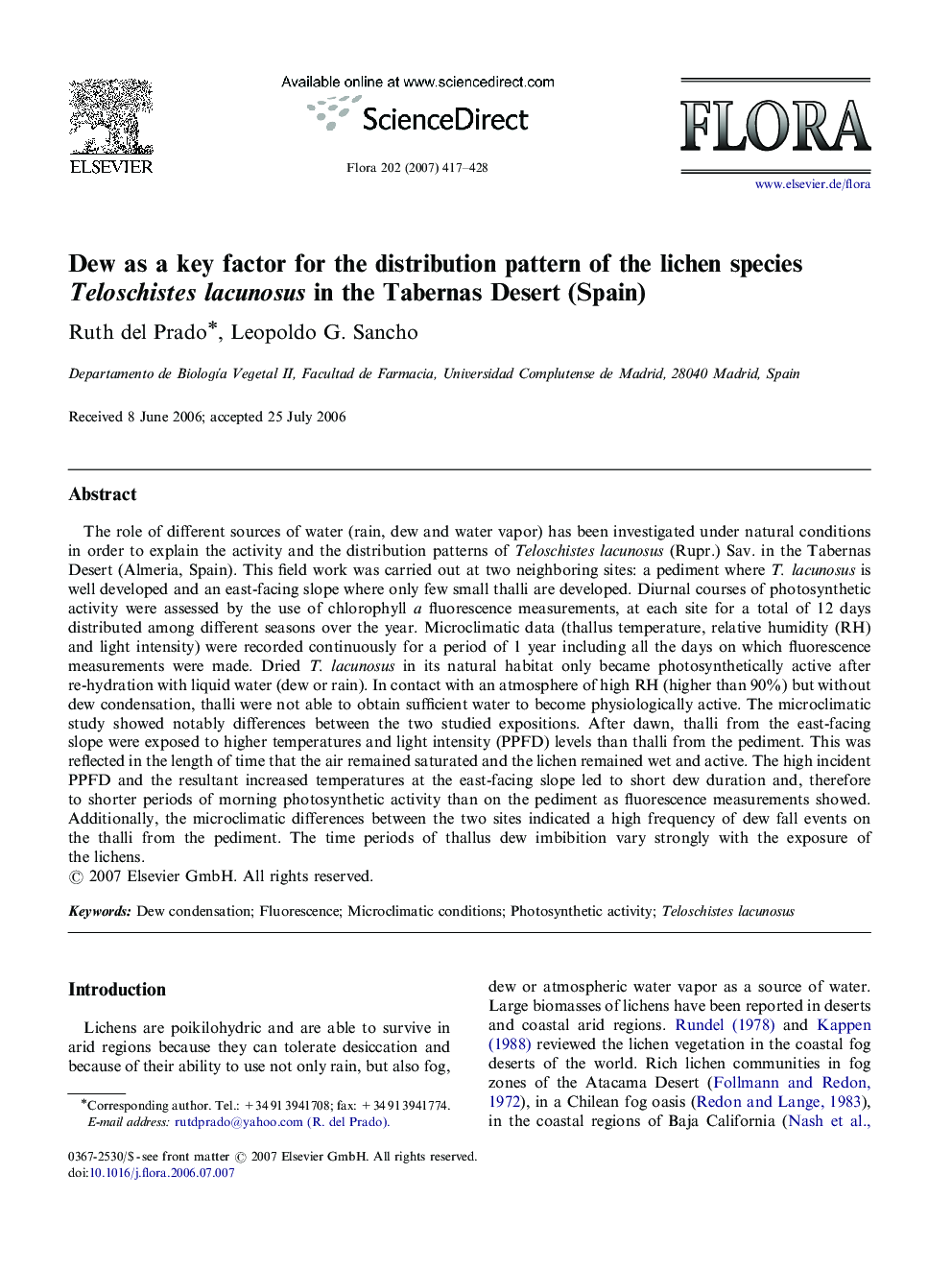| Article ID | Journal | Published Year | Pages | File Type |
|---|---|---|---|---|
| 2180262 | Flora - Morphology, Distribution, Functional Ecology of Plants | 2007 | 12 Pages |
The role of different sources of water (rain, dew and water vapor) has been investigated under natural conditions in order to explain the activity and the distribution patterns of Teloschistes lacunosus (Rupr.) Sav. in the Tabernas Desert (Almeria, Spain). This field work was carried out at two neighboring sites: a pediment where T. lacunosus is well developed and an east-facing slope where only few small thalli are developed. Diurnal courses of photosynthetic activity were assessed by the use of chlorophyll a fluorescence measurements, at each site for a total of 12 days distributed among different seasons over the year. Microclimatic data (thallus temperature, relative humidity (RH) and light intensity) were recorded continuously for a period of 1 year including all the days on which fluorescence measurements were made. Dried T. lacunosus in its natural habitat only became photosynthetically active after re-hydration with liquid water (dew or rain). In contact with an atmosphere of high RH (higher than 90%) but without dew condensation, thalli were not able to obtain sufficient water to become physiologically active. The microclimatic study showed notably differences between the two studied expositions. After dawn, thalli from the east-facing slope were exposed to higher temperatures and light intensity (PPFD) levels than thalli from the pediment. This was reflected in the length of time that the air remained saturated and the lichen remained wet and active. The high incident PPFD and the resultant increased temperatures at the east-facing slope led to short dew duration and, therefore to shorter periods of morning photosynthetic activity than on the pediment as fluorescence measurements showed. Additionally, the microclimatic differences between the two sites indicated a high frequency of dew fall events on the thalli from the pediment. The time periods of thallus dew imbibition vary strongly with the exposure of the lichens.
